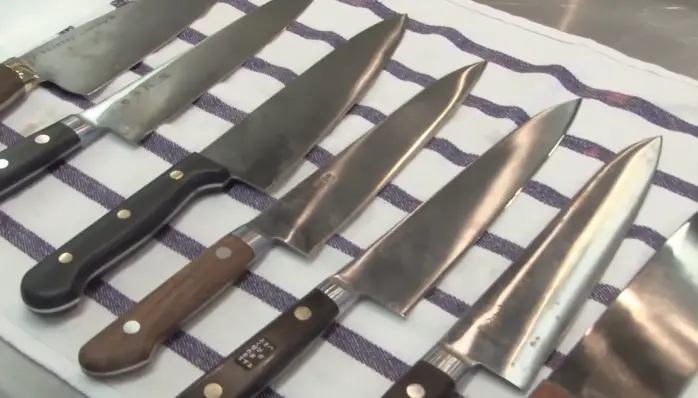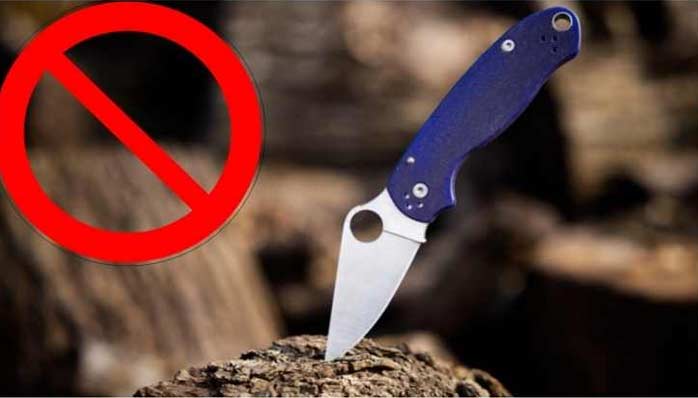Can A Butter Knife Hurt You?
Kitchen delicacies are meant to make your life comfortable and fascinating. I love using gadgets and tools to make my time in the kitchen well spent. A butter knife is one such item. However, I have heard of incidents in kitchens where small, unharmful kitchen tools have caused serious damage. Therefore, the question of whether a butterknife can hurt you can be raised.
Butter knives, when mishandled, can surely hurt you. Even though all that is required is to spread butter on the bread, handling it incorrectly could cause unanticipated damage to your hands, face, or eyes. So handle it with care.
Knives are categorized as cutlery because they are used as cutting implements. Butter knives are well suited for the job due to their unique shape, rounded edge, and flattened, blunt blade. Like all other kitchen tools, it needs an expert’s advice to use on your dining table.
What it can do to you as a tool, both beneficial and harmful, depends upon how well you know its use and importance on your table. Let us know more about it so we can have a good experience with this kitchen delicacy.
About Butter Knife: Construction, Types, and Sizes
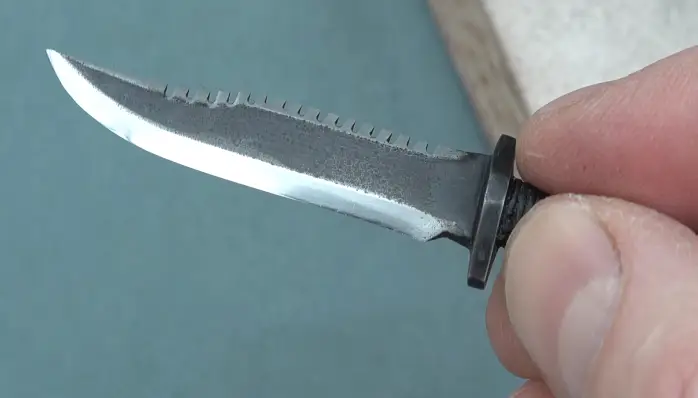
A butter knife is a metal knife with a flat, somewhat spread-out blade that is specifically made to spread butter on bread evenly. A master butter knife and serving knives are included in the set of butter knives.
Knowing its composition, shape, and size will help you gain a deeper understanding of it, and you can work to take better safety precautions as a result.
a) Butter knife construction:
When we think of a butter knife, it is always the stainless steel knife that comes to mind. This material makes it easier to spread food evenly, wash it quickly, and keep it safe. So, it is quite common to find a butter knife made of stainless steel. It is a reasonable decision, to be honest.
However, you may find butter knives in a variety of materials. Each material has pros and cons and sometimes it is a matter of personal choice.
b) Different types of butter knives
Some types are mentioned below, so what’s your choice?
1. Plastic Butter Knife
Although the sharpness of this butter knife is compromised, it is good in terms of durability and handling. However, the blade is thin enough to cut through the dough.
2. Wooden Butter knife
Some of us are quite addicted to using wooden utensils and wooden butter knives. Although smooth, lightweight, and unbreakable, it is also not sufficiently sharp.
3. Stainless Steel Butter Knife
This is most commonly used and liked by customers. It has chromium to make it corrosion-resistant. It has a catchy shine and repels stains.
It has strong blades, but the issue arises from the market alloys, which make it difficult for customers to locate an original material.
Butter knives are also made of a few other materials. Have a look!
| Type | Material | Functionality |
| Damascus Steel Butter Knife | Made with two alloys to forge strong steel | Durable for years but quite pricey |
| Carbon steel butter knife | Made with carbon and iron without chromium | Have extra strength and sharp edge but are prone to staining. |
| Ceramic Butter Knife | Made with hardened zirconium dioxide | Non-metallic and non-magnetic and are lightweight but too fragile to handle. |
| Titanium Butter knife | Made with titanium | Stylish, non-magnetic and resistant to rust, but less sharp |
c) Size of a butter knife
The size of kitchen utensils is determined by their intended use. Similarly, the knife family has a variety of sizes to complement the purpose they serve.
Common kitchen knives have a size ranging from 6 to 12 inches. As a result, the size of the butter knife can vary slightly depending on its intended use. The standard size is between 5 and 7 inches.
Butter knife hurt you or not: Explore the Truth
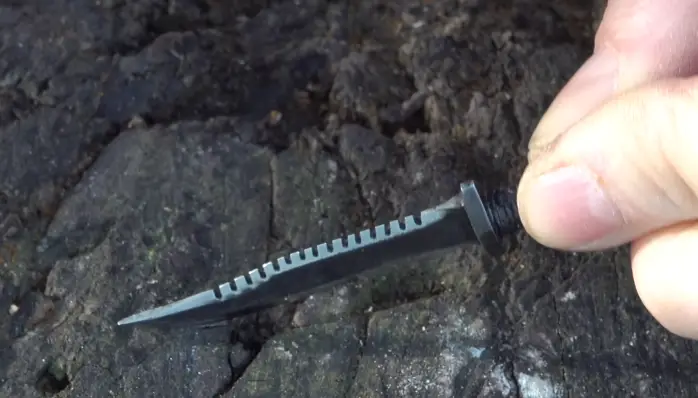
Every time you use a knife in the kitchen, including a butter knife, you should exercise caution. However, using a knife to cut butter makes it sound friendlier and more luxurious.
Moreover, it is not a tool for stabbing. They are not entirely innocent, however, as evidenced by a few specific incidents.
Potential dangers of a butter knife:
A butter knife is a dull-edged rather rounded knife with a flat blade. However, the blade is sharp. The construction speaks to you more, you see. It tells you how and from where it can cause damage.
So before stating the damages done, it would be better to drop some ideas of this knife being dangerous in terms of construction:
- The sharp blade
- The metal body
- Some of the butter knives with non-resistant metal body
Ways a Butter Knife Can Cause Injury
Hence, the above-mentioned facts can point mainly to the type or nature of injury by the knife:
1. Accidental puncture wounds from the pointed tip in some of the knife types.
2. Cuts from the dull edge
3. Injuries caused by improper use, such as using excessive force
I read of a man who once poked his eye with a hot butter knife accidentally when he was trying to fix his malfunctioned toilet paper roll. So it is all about the handling that can cause a seemingly harmless butter knife into a dangerous tool.
Risks Associated with Using a Butter Knife as a Weapon
- The danger of any object used as a weapon
- The potential for serious harm if a butter knife is used with intent to injure
Like all other kitchen tools, butter knives can cause harm if mishandled. And when you are using it as a weapon with the intention to attack somebody, think what a butter knife can do.
As a metal object, it is hard and can puncture the skin. Due to the butter knife’s tip and blade, there is always a chance that you will sustain scratches, wounds, or other types of skin damage.
Serrated butter knives are even more dangerous with their saw-like teeth. Plus, if it is hot, it can cause burns on the skin.
Is Butter Knife Safe? Typical uses of a butterknife
A butter knife is made to be a safe kitchen tool overall if we think of it as a knife. It is how you use it. The reasons for it being safe are more obvious with the construction.
It is simple to grab the soft bread and the creamy, smooth butter thanks to the blade’s rounded, dulled edge and nearly blunt appearance. You can spread the butter on your slice without disturbing the soft, creamy butter block.
Typical uses of a butterknife
Butter knives typically have simple uses, but the human mind is capable of drastically unexpected applications:
- A butter knife essentially acts as a bread slicer and butter spreader.
- It can be used as a spreader on condiments in sandwiches and burgers.
- Cutting cakes, cheese, and other soft foods, including boiled vegetables, is also beneficial.
- A butter knife can be used to frost a cake with cream or chocolate in the kitchen as an alternative.
- And even more, in crafting, the butter knife is there to spread glue on the paper or cardboard.
- Additionally, it serves as a temporary screwdriver for small screws.
Precautions to Take When Using a Butter Knife
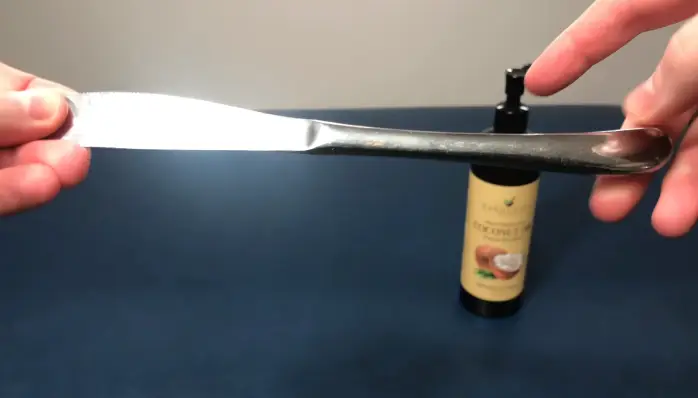
However, the better you follow the instructions, the safer you remain:
- Handle with care and respect, as with any knife.
- Use only for the intended purposes.
- To avoid accidental injury, keep it in a protected area.
FAQs
Can a butter knife pierce your skin?
Yes, it can, as the blade of metal is sharp to the extent of damaging the soft skin. Undue pressure on the knife while using it can be dangerous for the skin. It is when the pressure direction slips wrong. A knife is a knife in any way, and the metal blade or even the rounded tip can inflict harm on the skin.
Is it self-harm if I press hard on a butter knife on my arm?
Self-harm is occasionally used by young people, usually to attract attention. And sometimes, it is a stupid try for no reason. You can harm a butter knife by using it on yourself, after all. It is because the blade can break the skin.
Does a butter knife have a blade?
The butter knife’s blade is present, though it is not as sharp as a kitchen knife. It is normally dull and safer than a kitchen knife. Additionally, the blade of the knife has a rounded tip at the top, which makes it even safer.
Will a butter knife hold an edge? Is it sharp?
Considering the butter knife’s purpose, it does not have a sharp edge because it is not meant to cut through food. Although there is an edge, it is blunt. However, if you apply more force, damage may result.
Are butter knives serrated?
Normally, you may not need to assume a butter knife to be serrated, but changes with time have introduced serrated butter knives to have multiple advantages out of a single tool. The one you may find will help you scrape off butter as a thin curl.
Are butter knives allowed on airplanes?
Only plastic or round-bladed butter knives are allowed on airplanes. Additionally, only non-serrated butter knives are permitted. All other kitchen knives are not allowed to be brought aboard.
Final verdict:
A butter knife is a delicate kitchen tool, but if used improperly, it can cause serious injury or leave you with lasting regret. The main feature of it being a knife is always to be kept in mind. Whenever you are using a butter knife in the kitchen, keep it in a place out of children’s reach. It could hurt you if you use it as a knife to cut something. Wrap it tightly before taking it on a trip to prevent skin damage.


